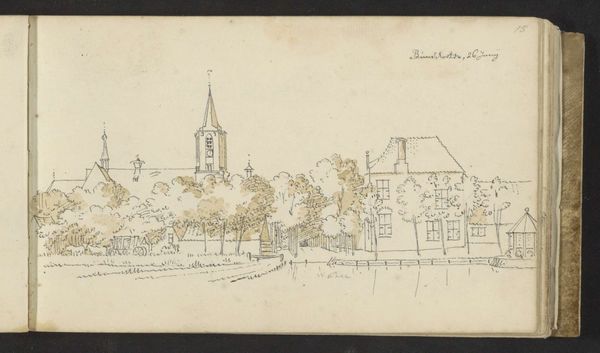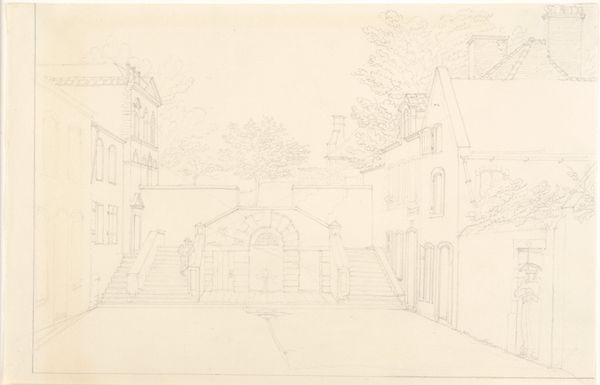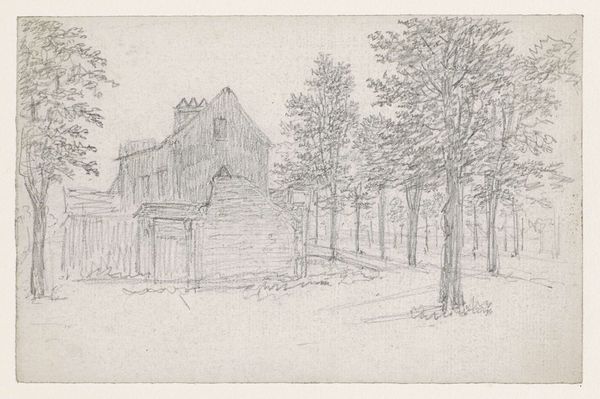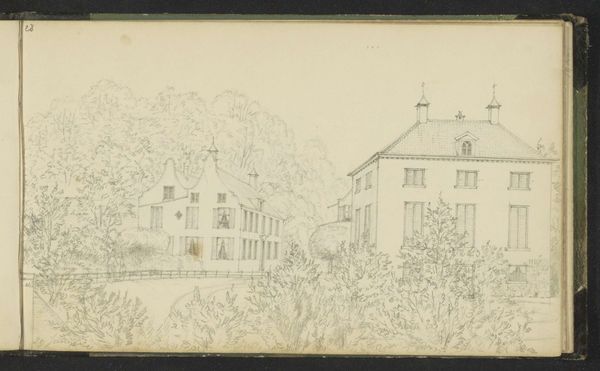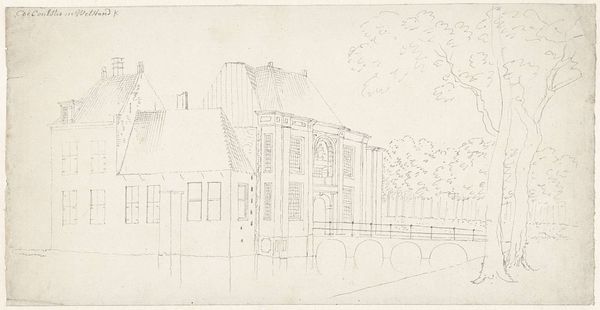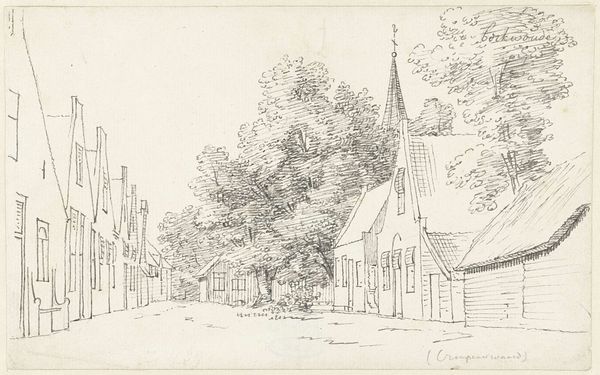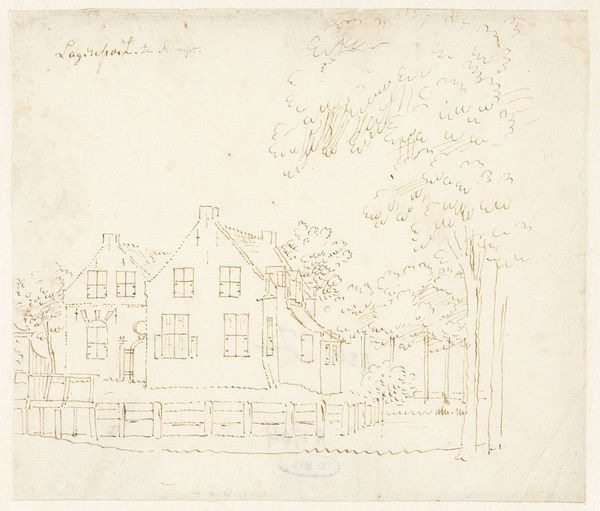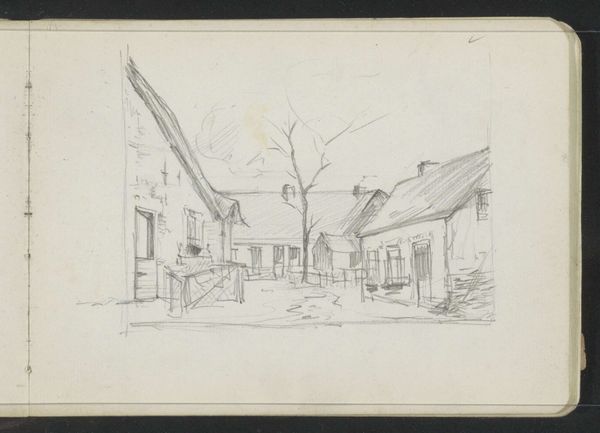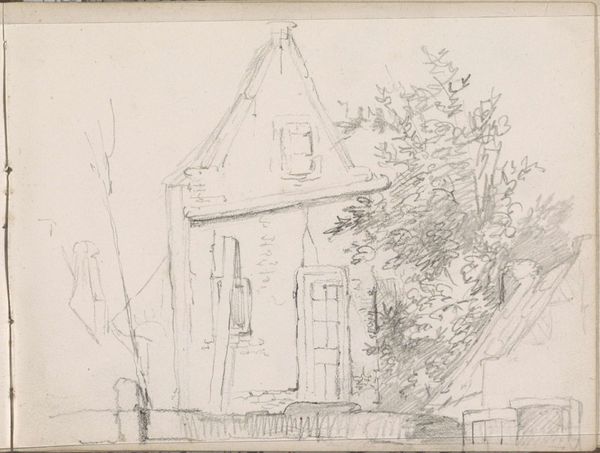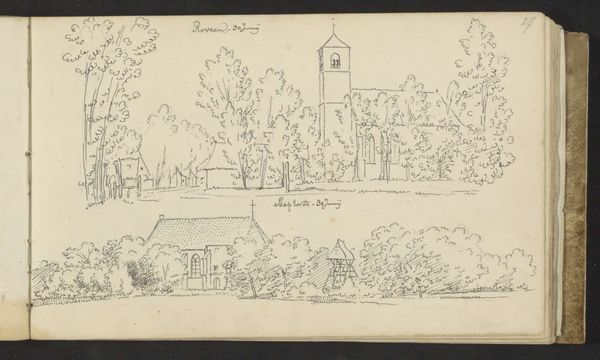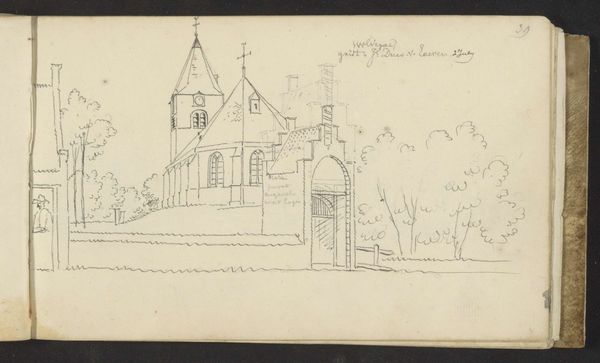
drawing, ink, architecture
#
architectural sketch
#
drawing
#
dutch-golden-age
#
landscape
#
ink
#
architecture
Dimensions: height 147 mm, width 172 mm
Copyright: Rijks Museum: Open Domain
Curator: Here we have Cornelis Pronk's ink drawing, likely from 1729, depicting "Buitenplaats van Gerard van Loon, zijaanzicht" or "Gerard van Loon's Estate, Side View." Editor: It’s remarkably crisp and serene. The meticulous lines outlining the architecture and the surrounding landscape impart a strong sense of order. It really does conjure images of 18th century Dutch opulence and perhaps even of a longing to belong within those social structures. Curator: Absolutely. Pronk, as a topographical artist, often documented estates like this one for wealthy patrons. The drawing provides not only an image of the estate, but insight into social standing in the Dutch Golden Age. These estates functioned as symbols of status, and Pronk played a vital role in visualizing that status. Editor: The carefully delineated garden elements carry a weight beyond simple aesthetics. Formally arranged gardens frequently signify control and refinement. Even the choice of vantage, portraying a side view, hints at an attempt to unveil an element of intimate domesticity even within a landscape of established aristocratic tradition. Curator: Yes, the perspective gives us a controlled glimpse. However, it's worth remembering that Pronk was also essentially providing a service. His patrons wielded influence over what aspects were emphasized. These landscapes were a means to show authority in society. Editor: I concede, it is easy to romanticize these scenes. Though, the human desire to shape and arrange space resonates across centuries, and these symbols, when studied, tell so much about our shared psychology. Perhaps, the emotional attachment transcends simple social hierarchies? Curator: I think both aspects are constantly entwined. Even today, the architecture we admire carries complex histories about its role. Cornelis Pronk, unintentionally perhaps, invites these explorations in the works. Editor: An intersection of commerce and emotion, I agree. The image captures the ambition and serenity of that era while simultaneously reflecting on how we assign meaning to our surroundings. Curator: A fitting ending to understanding a fragment of history displayed. Editor: Nicely said. An apt reflection, indeed.
Comments
No comments
Be the first to comment and join the conversation on the ultimate creative platform.


